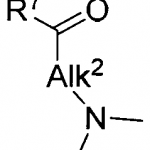
The natural harvest bugs, the yield security expert is frequently confronted with side effects on plants brought about by non-organic (abiotic) causes including temperature limits, supplement inadequacies, and sub-deadly impacts of herbicides. These last non-natural or non-irresistible circumstances, albeit stringently not plant sicknesses, should be disposed of as likely reasons for plant illness right off the bat in any journey to distinguish a vermin issue. In this way, the critical initial phase in any yield security methodology is to recognize the current pest(s) of concern or the likely irritations. This ID will establish the groundwork for any future choices to be made. Most plant sicknesses are brought about by microorganisms (parasites, microbes, phytoplasmas, infections, viroids) and are consequently, typically, too little to ever be related to the unaided eye. A portion of the fruiting collections of organisms might be sufficiently enormous to be utilized for recognizable proof, (eg. sclerotic types of Sclerotinia or stem rust pustules), in any case, numerous contaminations are generally interior and when a portion of the fruiting bodies are sufficiently huge to be seen with the unaided eye, it is past the time to execute an administration program. https://www.pestcontrolindia.com/ click here for more information.

Plant illnesses
Plant illnesses make adjustments to the plant that should be visible as side effects or signs. Indications of plant illness are characterized as the microbe, its parts, or items seen on or in a host plant. If the microbe should be visible then this aids in the right illness recognizable proof. The most widely recognized infection signs incorporate rusts, mucks, wool molds, and fine molds. The rusting sign is the spores of the parasite emitting through the epidermis of the plant, while a fine mold is the organism mycelium and spores on the plant surface. Fleece molds, then again, show up as a white or dark sprout of parasitic spores that jut through the stomates of the host. Filth parasites supplant portions of the plant (generally the flower organ) with spores. Every one of the organisms liable for these signs is biotrophic (for example requires a living host). Side effects are the progressions to the plant in light of disease. A few side effects are trademarked in specific yields, for example, blushing of the xylem vessels in fusarium shrinks or mosaic examples on leaves because of viral illnesses.
Others are a sign in particular and require the disconnection of the microbe for additional recognizable proof.
- Bacterial ID is through standard bacteriological tests as well as unsaturated fat investigation or sequencing of the monotonous quality arrangements like the 16S rDNA locale. This is the district of DNA that happens between qualities coding for the ribosomal device.
- Infections are generally recognized utilizing industrially accessible ELISA (protein connected immunosorbent examination) procedures, utilizing electron microscopy, and additionally polymerase chain response and sequencing.
- Nematodes might be separated utilizing a whitehead plate, moistening, or a Bauermann channel. Just pathogenic nematodes have a style. The recognizable proof depends on morphological characters or sequencing of the 18S rDNA locale (this is like the district encoding the ribosomal area yet in eucaryotes).
- Bugs can be recognized utilizing standard morphological characters or DNA barcoding. In any case, the main viewpoint is the mouthparts, either sucking or biting, as this decides the sort of injury the bug causes.
- Following the right distinguishing proof of the bug, the degree of the populace is not entirely settled.



